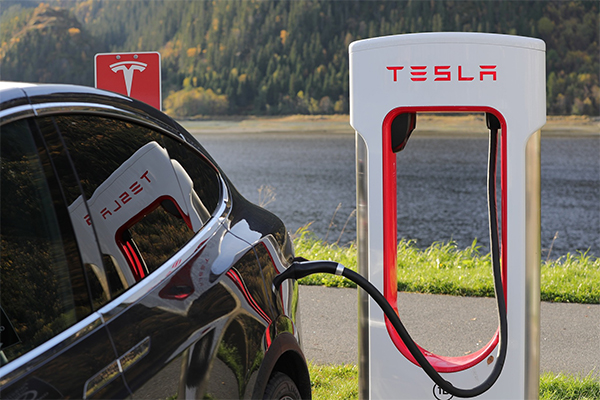Every company is concerned about quality, but leading companies are leveraging automated systems and IoT data to test their products and improve quality at a new level. Leaders in this industry include Tesla, Raymond, and Daimler Trucks.
How Is IoT Data Being Leveraged Today to Improve Quality in the Commercial or Industrial Market?
Tom McKinney | HMS Industrial Networks
There are many continuous improvement programs that companies leverage to improve processes and quality. These programs include Six Sigma, Lean Manufacturing, Total Quality Management (TQM), Just-In-Time (JIT) and many others. Each of these systems centers around the idea of improving a process and verifying that improvement. Accurate data is critical to each of these programs.
Accurate data is required to define a baseline for the current process and comparison purposes and to measure the new process and quantify the improvement. Many business processes may be able to be improved based on simple observations, but product quality improvements are much harder to measure. This is based on the simple fact that most products manufactured function properly. It is also well understood that product failures or returns add significant costs.
Costs associated with poor quality products come in many forms including:
1. The cost of testing and detecting defective product.
2. The cost to repair a product before shipping to a customer.
3. The cost to repair or replace a customer return.
4. The cost of future sales due to a poor perception of quality by the end customer.
5. The cost incurred at a customer site due to a failure of a give product, a critical issue for machine builders.
6. The cost of service and maintenance associated with low quality products.
Every company is concerned about quality, but leading companies are leveraging automated systems and IoT data to test their products and improve quality at a new level.
Leaders in this industry include Tesla, Raymond, and Daimler Trucks. Let’s look at how each of these manufactures is leveraging connected systems and remote data to improve products.

Figure 1: Tesla Car Charging
Tesla
Tesla has become the world leader in fully electric cars in less than 10 years, displacing ever major car vendor. One way they have been able to do this is by leveraging their customers vehicles as test platforms. Most Tesla customers are constantly providing telemetry data back to Tesla. Every customer signs a Telemetry Agreement with the following clause:
Vehicle Telematics Subscription. Your car includes an activated subscription service that records and sends diagnostic and system data to Tesla to ensure that your car is operating properly, to guide future improvements and to allow us to locate your car under certain limited circumstances. There is no charge for this service. Access to location data is tightly controlled within Tesla and a history of such is not stored on our servers. We appreciate that customer privacy is of paramount importance. Please feel free to contact us if you would like to suspend your subscription to these services.
This data can and is used to measure the performance of the product in real-world driving conditions including extreme conditions for those customers willing to push the limits of their Tesla. The car has it’s own LTE data modem with service paid for by Tesla for the life of the vehicle. There are a number of possible ways to use the information from the vehicles, but 3 techniques have been instrumental in giving Tesla an edge over every other car manufacture in the world.
The first is battery analysis. Tesla knows everything about each battery design and installed in a car. This production data includes everything from the exact day and time it was produced to how well it performed in post manufacturing testing. This data can be used to compare different battery designs or even the impact of different production test limits. The information allows them to systematically improve the quality of their products using real data from deployed products. There is no need to estimate the performance or evaluate customer complaints the data is 100% accurate and unbiased.
The second is software verification. The Tesla vehicle control unit was designed for simultaneous parallel testing from day one. This allows Tesla’s to operate the vehicle using production software in parallel with a simultaneous instance of beta software. Because the two instances are running in parallel on the same data the output of each control system can be compared to one and other on vehicle reporting back only differences. This is an excellent example of edge computing or fog computing. No need for a massive cloud based AI to compare all the data each car performs the analysis locally. The level of testing that tesla can apply to their next generation software levering this platform is order of magnitude more than a traditional in-house test team could ever achieve during the traditional vehicle development cycle.
The third advantage is feature improvement. Because Tesla can leverage their entire deployed fleet of cars they can introduce new features into that fleet and test those features under actual driving conditions. This has allowed their auto pilot feature to exceed everyone expectations in just a few years. While testing auto pilot features they can even compare the performance of the auto pilot to the current driver. They can then attempt to determine why the human driver made any given driving decision and determine if that decision should have been made by the auto pilot. Finally, they can use this information to improve or even teach their auto pilot AI.

Figure 2: Forklift
Raymond
Raymond is one of the highest quality forklift manufactures in the world. Sales of their product depend on customers understanding the value of owning the highest performance lowest down time machines in the market. It is critical that Raymond be able to document and showcase their performance advantage. This is complicated by the fact that forklift performance is partially dependent on the human operator. Raymond introduced iWarehouse a IoT application to improve fleet optimization and operator performance. The application offers the added benefit of documenting forklift performance that can be used to showcase the high reliability of the product.
The iWarehouse solution is constantly collecting hundreds of data points in real-time documenting both forklift and driver performance. This platform allows management to understand exactly how a lift is being used. One key metric is the average speed of a lift. This metric translates directly to cost savings. At a facility leveraging 10 forklifts, operating 10% faster effectively adds an additional lift to the fleet without the need to invest in an operator or an additional lift. Documenting this performance improvement allows customers to see the value of investing in Raymond Lithium Ion batteries which enable higher speeds for longer periods of time with less charging. In this case the data justifies the additional cost of high performance batteries.
iWarehouse also allows Raymond’s customers to detect impacts. Impacts lead to machine damage and eventual machine down time. By detecting these collisions in real-time the owner can address the issue with the operator but more importantly any damage can be detected with on board sensors and associated with the collision. Allowing Raymond quality engineers to better understand how the product is being used. This data can be used to identify sensor data that should be ignored because the collision was well beyond the acceptable range or data that should be evaluated. This is a critical step to ensure the quality team is focused on the right data as opposed to an extreme, one off, event.

Figure 3: Daimler/Mercedes Brand Star Logo
Daimler Trucks
Daimler Trucking is investing heavily the data access solutions for their trucking products. Before 2012 Daimler began integrating data connectivity solutions into their trucks allowing them to liberate the sensor data trapped in the truck. Previous this information was either discarded or recorded locally in the truck only to be access after a maintenance event occurred.
In this system an edge gateway with a cellular modem is used to collect data from the Engine Control Units (ECU) and other vehicle management systems. This data is used to cerate a virtual technician according to Daimler detect failures before they occur routing drivers to service centers before a failure forces the driver to make an unexpected and potentially costly stop. Clearly a benefit to the end user.
This data is also critical to the Quality Engineer. Destructive testing is the most time consuming and costly way to verify the quality of a component. Typical destructive testing involves operating the device under test well beyond it’s limits to accelerate (simulate) ageing. Typical test times range from weeks to months. Once the part fails models are created to estimate the life of the device under typical operating conditions. This data can now be verified by monitoring the components until failure.
Without remote monitoring many component failures may go unregistered this is especially true once a product is past warranty. But with this system, data is critical to developing a complete quality model for a vehicle can be captured and leveraged to improve the platform over time.
Daimler has over 400,000 vehicles enabled with this technology and has been able to successful develop a customer service platform under the brand name Detroit Connect.
The content & opinions in this article are the author’s and do not necessarily represent the views of ManufacturingTomorrow
Featured Product

